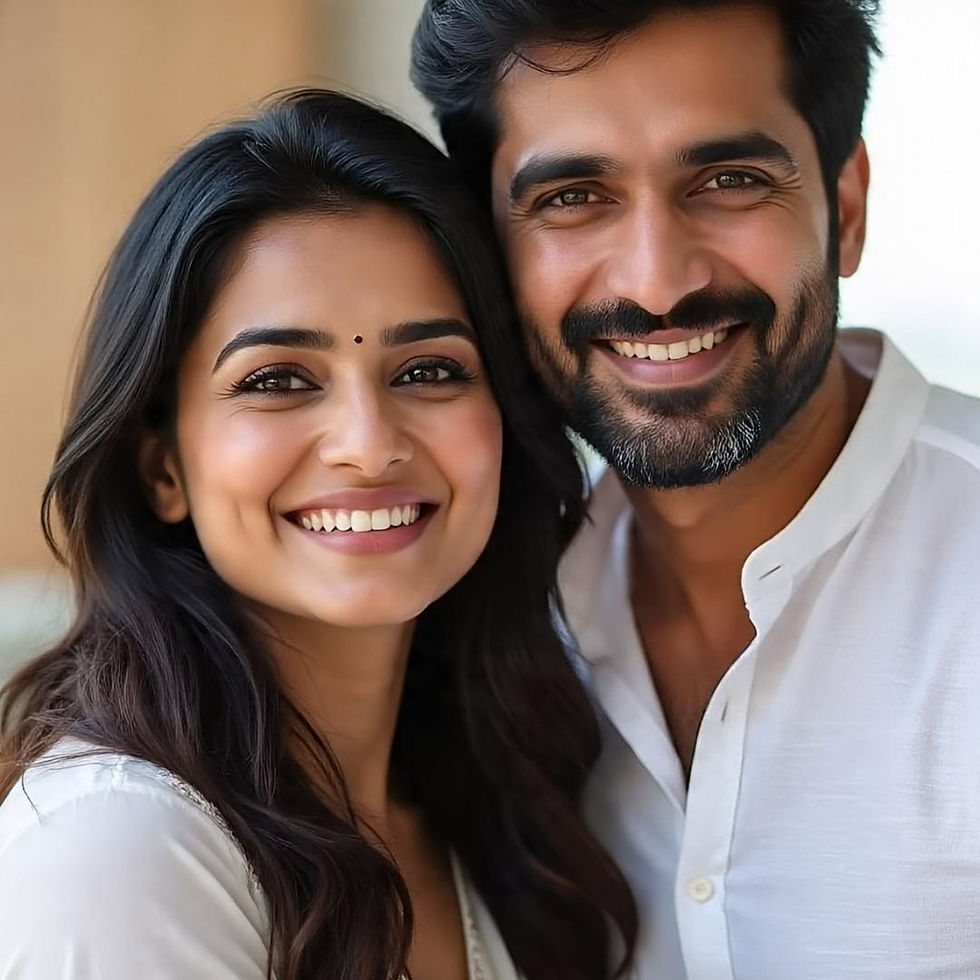Modern Love: How Indian Relationship Culture Is Evolving with the Times
- Emily Parker

- Jun 6
- 3 min read
Love, as we knew it, has changed. The year is 2025, and in the Indian context, relationships are no longer confined to traditional timelines or rigid roles. They’re fluid, intentional, and deeply personal.
From metro cities to smaller towns, the ripple effects of evolving values, social media, mental health awareness, and cultural openness are reshaping how Indians approach love—and how they define a fulfilling relationship.
Let’s decode the cultural shift happening in Indian relationships right now, minus the fluff and drama, but with a touch of thoughtful insight.
What’s Trending in Indian Relationships Right Now?
1. Conscious Relationships > Convenient Ones
In 2025, relationships are becoming less about ticking boxes (marriage, kids, financial security) and more about emotional compatibility, shared values, and long-term growth. This is not just a trend—it’s a value shift.
People are asking questions like:
Does this person support my mental wellness?
Can we grow together without losing ourselves?
This change isn’t anti-marriage—it’s pro-awareness.
2. Solo Living & Self-Reliance Are Empowering Choices
For the first time, choosing to be single in your late 20s or 30s in India isn’t met with as much societal concern. Many young Indians are living alone, earning well, and focusing on their passions before stepping into commitment.
It’s no longer “settling down”—it’s “setting yourself up” before building something with someone else.
3. Dating Apps Meet Mindful Dating
Dating apps aren’t new, but the way people use them has matured. In 2025, it’s not just about swiping right—it’s about filtering for emotional intelligence, shared ethics, and mental health compatibility.
More apps are also offering therapy tie-ins, couple quizzes, and relationship coaching—a signal that digital dating is finally catching up with real emotional needs.
4. Therapy & Relationships Go Hand in Hand
Seeking help is not taboo anymore. Couples therapy, premarital counseling, and individual emotional support are now seen as healthy—not desperate.
Many young couples even go for “relationship audits” once a year, just like a health check-up. It’s all part of building emotional intelligence in partnerships.
5. Gender Roles Are Being Rewritten
In Indian homes, conversations about shared chores, equal emotional labour, and parenting duties are becoming more common. Women aren’t just looking for financial stability in a partner—they want someone who can cook, clean, andcommunicate.
This has pushed the traditional idea of masculinity into a more nurturing, emotionally available space. And frankly, it’s long overdue.
Editor’s Opinion: Why This Matters
What we’re witnessing in India today isn’t the breakdown of traditional values—it’s their reimagination. The heart of Indian culture has always celebrated relationships—through poetry, cinema, festivals, and rituals.
But in 2025, that celebration looks different. It’s more inclusive, less performative, and far more emotionally intelligent.
We’re seeing:
LGBTQ+ relationships receiving more visibility and acceptance
Interfaith and intercaste couples standing strong with community support
Older adults finding love again and speaking about it publicly
It’s not that problems don’t exist—but for the first time, we’re talking about them openly, without shame.
Final Thoughts
Love isn’t dead. It’s just becoming more human. And in a world that’s increasingly digital, fast-paced, and uncertain, that’s something worth celebrating.
As Indian culture evolves, our relationships are mirroring that change—growing not just in style, but in substance.




Comments